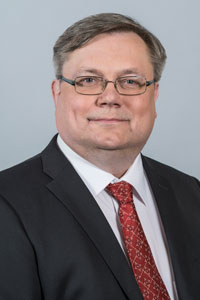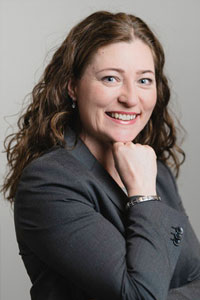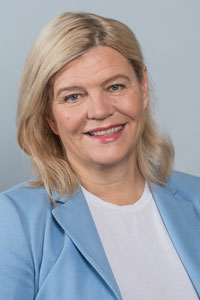Administration
Keva is an independent body governed by public law and its operations are based on the Public Sector Pensions Act and the Keva Act. Further provisions supplementing the Act can be found in the Council’s Standing Orders.
Council
The highest decision-making body in Keva is the Council.
The Ministry of Finance appoints the Council members for the municipal electoral period. The Council has 30 members of which six are appointed, according to law, based on a proposal by the main municipal negotiating organisations, four based on a proposal by Local Government Employers KT and the rest based on a proposal by the Association of Finnish Local and Regional Authorities. The Association of Finnish Local and Regional Authorities must take into account the municipal election result in its proposal.
The present Council’s term of office began on 1 September 2021. Chairman is Eero Reijonen and vice chairman is Heikki Vestman.
Members of Council
|
Councillor |
Personal deputy |
|
Recommended by the Association of Finnish Municipalities |
|
|
National Coalition Party |
|
|
Heikki Vestman, Sipoo |
Juha Nummentalo, Salo |
|
Aulikki Sihvonen, Kontiolahti |
Erja Laaksonen, Jämsä |
|
Eero Suutari, Kajaani |
Seppo Hujanen, Mäntyharju |
|
Susanna Koski, Vaasa |
Riikka Varila, Kuortane |
|
Jarmo Husso, Oulu |
Mervi Rings, Lemi |
|
Social Democratic Party of Finland |
|
|
Nea Karenius, Järvenpää |
Ilkka Nokelainen, Imatra |
|
Maija Kuusisto-Länsineva, Harjavalta |
Seppo Eskelinen, Joensuu |
|
Mahad Ahmed, Helsinki |
Liisa Terävä, Rautjärvi |
|
Pekka Salmi, Tampere |
Miina-Anniina Heiskanen, Oulu |
|
Centre Party |
|
|
Eero Reijonen, Liperi |
Paula Sihto, Seinäjoki |
|
Jouni Kemppi, Lappeenranta |
Tapio Havula, Mäntsälä |
|
Minna Sarvijärvi, Ylöjärvi |
Miina Harmaala, Lahti |
|
Finns Party |
|
|
Tanja Hartonen, Mikkeli |
Terho Korpikoski, Simo |
|
Marke Tuominen, Äänekoski |
Mikko Nurmio, Valkeakoski |
|
|
Päivi Karppi, Vaasa |
|
The Greens |
|
|
Minna Pöntinen, Mikkeli |
Anne Lindgren, Riihimäki |
|
Teemu Meronen, Helsinki |
Jussi Junni, Helsinki |
|
Left Alliance |
|
|
Eija Rannanpää, Vimpeli |
Petri Pekkola, Kotka |
|
Matti Semi, Varkaus |
Mari Lind, Orivesi |
|
Swedish People’s Part of Finland |
|
|
Malin Brännkärr, Kronoby |
Henrik Wickström, Ingå |
|
Proposed by Local and County Government Employers KT:: |
|
|
Jorma Haapanen, Kirkkonummi |
Eino Leisimo, Jyväskylä |
|
Juha Rostedt, Lahti |
Marja-Leena Laine, Nurmijärvi |
|
Taina Niiranen, Parkano |
Kirsi Ojansuu-Kaunisto, Hämeenlinna |
|
Sinikka Valtonen, Turku |
Pekka Heikkinen, Tuusula |
|
Proposed by principal local government contracting organisations JAU (public sector services union), JUKO (Negotiation Organisation for Public Sector Professionals) and Sote (negotiation organisation for the social services and healthcare sector): |
|
|
Keijo Karhumaa, JHL |
Minna Pirttijärvi, JHL |
|
Jonna Voima, Jyty |
Jukka Maarianvaara, Jyty |
|
Tuomas Hyytinen, Talentia |
Kirsi Grym, STHL |
|
Petri Lindroos, OAJ |
Anna Zibellini, Akavan erityisalat |
|
Silja Paavola, SuPer |
Anna Dalén, SuPer |
|
Millariikka Rytkönen, Tehy |
Anna-Leena Brax, Tehy |
Board of Directors
The Board’s task is the general supervision and guidance of Keva’s activities. The Board’s function, according to law, is to decide on the pension fund investment plan.
Members of Board 2023-2025
|
Regular members |
Personal deputies |
|
Heikki Autto |
Samu Vahteristo |
|
Diana Bergroth-Lampinen |
Harri Jokiranta |
|
Toni Eklund |
Tiina Kaartinen |
|
Anne Holmlund |
Milla Bruneau |
|
Markus Lohi |
Kirsi Torikka |
|
Henrika Nybondas-Kangas |
Mika Juutinen |
|
Ari Korhonen |
Outi Mäkelä |
|
Katarina Murto |
Janne Aaltonen |
|
Päivi Niemi-Laine |
Kristian Karrasch |
|
Matti Putkonen |
Piritta Poikonen |
|
Else-Mai Kirvesniemi |
Anne Sainila-Vaarno |
Members of Management group
Personal E-mail addresses: firstname.lastname[at]keva.fi. Please, replace Scandinavian å, ä or ö. with a and o.
 Jaakko Kiander CEO |
 Kimmo Mikander Kimmo MikanderDeputy CEO |
 Ari Huotari CIO |
||
 Piia Laaksonen CFO and Chief Actuary |
 Reija Hyvärinen Communication Director |
 Mika Gylén, HR Director |
||
 Mikko Kenni, Director of Customer Relations and Work Ability |
|
 Staff member representative, Birgitta Moisala Customer Manager |
||
Working Life Development Working Group
The function of the Working Life Development Working Group is to develop measures for maintaining the health and work capacity of municipal employees. The focus of the group is the improvement of the quality of working life, maintaining and improving work capacity as well as on measures preventing incapacity to work.
The working group and its function are defined in Keva’s Standing Orders. The Board appoints the working group for its term of office. Of the 12 working group members, six are chosen based on proposals by the municipal sector’s employee organisations.
Members of Working Life Development Working Group
Chairman Arja Aroheinä
Mari Antikainen
Kari Eskola
Jonas Fyrqvist
Tapani Hellstén
Keijo Karhumaa
Mikko Kenni
Konstantin Laakkonen
Päivi Lanttola
Tuula Metsä
Merja Paananen
Jussi Rantanen
Anne Sainila-Vaarno
Minna Salli
Sinikka Valtonen
Ulla Walli
Ulla Westermarck
Supervision
Keva’s operations are overseen by the Financial Supervisory Authority.
Internal control, risk management and internal audit
Internal control
Internal control means all of the procedures, systems and methods through which Keva’s management and council aim to ensure efficient, economical and reliable operations and the accomplishment of its goals.
Internal control is a process which ensures the following: achieving set goals and aims as well as the economical and efficient use of resources the reliability and accuracy of financial and other management information complying with laws, regulations and instructions, as well as with decisions by administrative bodies, internal plans and operating methods.
Risk management
Risk management is an integral part of Keva’s internal control and it means the recognition, assessment, restriction and supervision of risks resulting from operations or significantly connected to them. Risk management also involves contingency and emergency planning to ensure the smooth continuation of operations.
The main objective of risk management is to support the development of Keva's operations and processes and the attainment of goals, in order to secure the rights of the insured and pension recipients in all situations.
The most significant risks for Keva are related to financing and investment activities and operational risks.
Further information on risk management: Annual report and interim reports
Internal audit
The internal audit of Keva assesses the efficiency and adequacy of internal control at the institution and provides proposals for improving operations. The internal audit operations are based on an internal audit activities plan approved annually by the Board. The function reports to the CEO and the council.
Compliance function at Keva
The Compliance function’s core duty is to assist in proactively anticipating the effects of legislative and regulatory changes on Keva’s operations. The Compliance function also serves to ensure that the entire organisation has the capacity to comply with legislation, statutory regulations and Keva’s in-house rules.
The Compliance function is tasked with the following:
- proactive anticipation of effects in legislative and regulatory changes
- promotion of compliance with acts, decrees and statutory regulations
- supervision, advice and guidance for compliance with Keva’s in-house regulations, guidelines and principles
- contribution to risk management and good governance projects within Keva
The maintenance and development of Keva’s independent Compliance function is the responsibility of the Compliance Officer whose primary function is to support the Board, management and the business in ensuring reliable administration and the effectiveness and sufficiency of internal control. Compliance reports to the CEO and also provides regular reports to the Board.
The responsibility for legislative and regulatory compliance always resides with the business units and management which are supported in this undertaking by the Compliance function.
